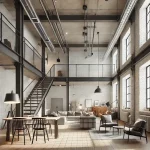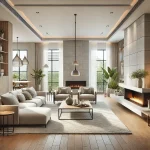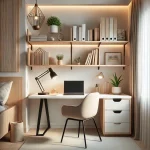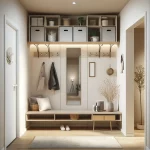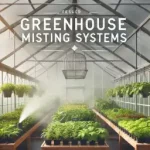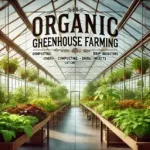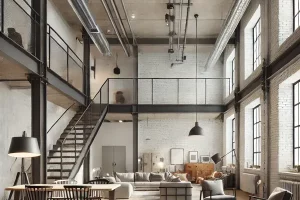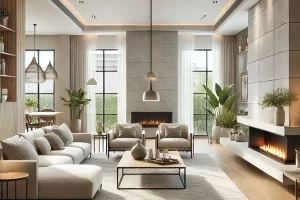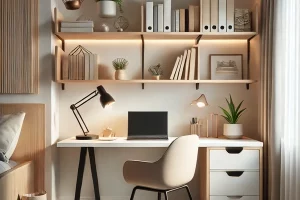Greenhouse with Solar Panels: Solar power is making greenhouses better for the planet. This trend is growing in places like Japan and China.
Why Solar Panels?
Solar panels make electricity from the sun. They go on the greenhouse roof. This electricity powers things like water pumps inside the greenhouse.
Tips for a Greenhouse with Solar Panels
Here are some tips to make the best greenhouse with solar panels:
- Make sure it’s not too hot inside. Use vents to let hot air out.
- If you have a big yard, use it! Your greenhouse can be like an extra room.
- Pick the right solar panels. Make sure they give the right amount of power.
- Place your greenhouse where it gets lots of sun. It makes more power.
Types of Greenhouses for Solar Panels
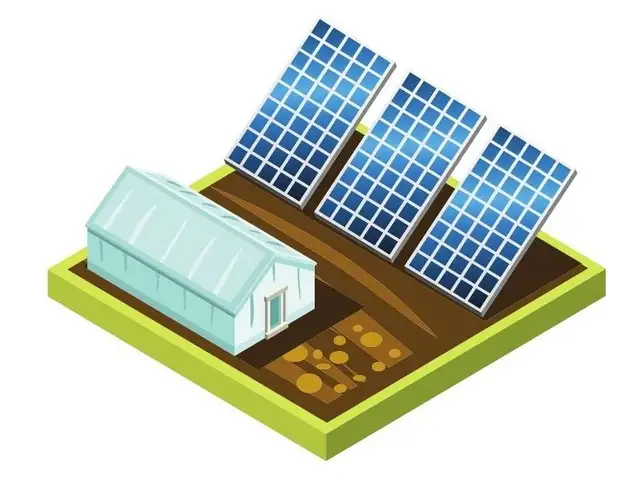
Which greenhouses go best with solar panels? Here are some types that work really well:
Lean-To Greenhouse
A Lean-To greenhouse is built against the side of a house or building. It’s great for small spaces. Solar panels can go on the roof or even on the wall of the building it leans against.
A-Frame Greenhouse
This greenhouse looks like the letter “A,” and it’s simple but strong. The steep roof is great for solar panels because it can catch a lot of sun.
Hoop Greenhouse
This type is made with big hoops covered in plastic or cloth. It’s like a tunnel for your plants! Solar panels can go on the top or sides as long as they get plenty of sunlight.
Geodesic Dome Greenhouse
It is a round greenhouse made of many triangles. It’s super strong and can hold a lot of snow or wind. The dome shape lets you put solar panels almost anywhere, so they get sun all day long.
Advantage of Greenhouses with Solar Panels
Having a greenhouse with solar panels is like a dream team for your garden! Let’s go over some of the awesome perks:
- All-Year Growing: Solar panels can help keep your greenhouse warm.
- Clean Energy: Solar panels use the sun to make electricity. That’s good for our planet because it doesn’t cause pollution.
- Save Money: After the first cost of buying solar panels, the electricity is free.
- Less Work: With solar power, some things in the greenhouse can be automatic, like watering systems or fans. That’s less work for you!
- Sell Extra Power: If you make more electricity than you need, some places let you sell it back.
- Good for All Climates: Whether it’s super hot or super cold, a greenhouse with solar panels can be adjusted to keep plants happy.
- Space-Saving: Solar panels usually go on the roof, which means they don’t take up extra space on the ground.
- Quiet and Safe: Solar panels don’t make noise and don’t have any risky moving parts.
- Emergency Power: If there’s a power cut, your greenhouse still has electricity!
- Be a Trendsetter: Using solar power is cool and modern.
Disadvantages of Greenhouses with Solar Panels
Here are some of the downsides:
- Initial Cost: Buying and installing solar panels can be expensive at first. It’s a big investment!
- Weather Dependent: If you live where it’s often cloudy, the panels might make little electricity.
- Maintenance: Solar panels are easy to take care of, but they do need some cleaning and checks to make sure they work well.
- Space: Some types of greenhouses might need more good spots to put the solar panels.
- Complex Setup: Getting all the parts to work together—like the solar panels, batteries, and greenhouse systems—can be a bit tricky.
- Energy Storage: If you want to use solar power at night, you’ll need batteries. Those can be costly and take up space.
- Reduced Light: Putting panels on the roof cuts down on how much sunlight gets to your plants. You’ll need to think about that when planning your greenhouse.
- Local Rules: Some places have rules about where you can put solar panels or how big they can be. Make sure to check that out first.
- Aesthetics: Some people don’t like how solar panels look in their greenhouse. It’s all up to your taste!
- Technical Know-How: You’ll need some basic understanding of how to operate and maintain a solar energy system.
Climate Tips
The weather where you live is super important when picking a greenhouse.
- Cold Places: If it’s often cold, think about a greenhouse that keeps heat well. A Geodesic Dome or an A-Frame could be good choices.
- Warm Places: If you live where it’s mostly warm, you’ll want a greenhouse that’s good at letting hot air out. A Hoop or Lean-To greenhouse might work best for you.
Size and Place
What you want to grow can help you decide how big your greenhouse should be and where to put it.
- Big Plants: If you want to grow trees or big bushes, you’ll need a big greenhouse with tall walls.
- Small Plants: For herbs or small flowers, a smaller greenhouse will do.
- Lots of Sun: Make sure to put your greenhouse where it will get lots of sunlight, especially if you’re using solar panels.
Building Your Greenhouse
When building your greenhouse, you’ve got a couple of choices for materials.
- Glass: Glass is great for letting a lot of light in, but it can be heavy and expensive.
- Plastic: Plastic is lighter and cheaper but might let less light through.
Also, think about airflow. You want enough holes or vents so air can move but not so many that it gets too cold or hot inside.
How Much Power?
The amount of power you’ll get depends on your solar panels.
- Big Panels: If you go for big panels, you’ll get more power. It is good for running lots of things like fans and lights.
- Small Panels: Smaller panels will make less power, so they’re good if you only need a little electricity.
When to Install Panels
The best time to put up your solar panels is in the morning. Why? Because they work best when they catch the sun as it comes up.
Where to Put Panels
You’ve got some options for where to put your solar panels.
- On the Roof: This is a good spot because it usually gets a lot of sun.
- On the Sides: You can also put them on the sides of your greenhouse. Just make sure to pick a side that gets a lot of sun, like the south side.
FAQs
What Is a greenhouse with solar panels ?
A greenhouse with solar panels is a place to grow plants that also has solar panels. These panels turn sunlight into electricity to help the greenhouse work.
What If Panels Don’t Face the Sun?
If your solar panels don’t face the sun, they won’t be able to make electricity. That’s why it’s super important to put them where they get lots of sunlight. If they’re not facing the sun, you won’t get the power you need for your greenhouse.
Why Add Solar Panels to a Greenhouse?
Solar panels give clean energy for things like fans and heaters in the greenhouse. It is good for the Earth and can save you money.
Is It Hard to Put Solar Panels on a Greenhouse?
No, it’s not hard. You can add it to a greenhouse you already have or plan to build a new one with it.
Can All Greenhouses Have Solar Panels?
Most types can have solar panels, but it may depend on how your greenhouse is built and where it is.
What’s the Cost? Is It Expensive?
Solar panels cost some money at first, but you might get some of that money back from the government.
Will Solar Power Give me All the Energy I Need?
It depends on how much energy you need and how many solar panels you have. Sometimes solar energy is all you need, and sometimes it’s just part of your energy.
What If the Panels Don’t Face the Sun?
If the panels aren’t facing the sun, they make less electricity. It’s important to put them where they get lots of sun.
Can I Keep Extra Energy for Later?
Yes, you can save extra energy in a special battery for use when the sun isn’t out.
Is It Hard to Take Care of the Panels?
Actually, taking care of solar panels takes work. They need to be cleaned sometimes and checked by a pro once in a while.
Where Can I Get a Greenhouse with solar panels ?
You can buy one from companies that sell them, or you can add solar panels to a greenhouse you already have.
Conclusion
Greenhouses with solar panels are good for you and the Earth. They let you grow plants in any weather. Plus, they use clean power from the sun.
